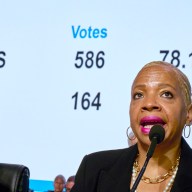Taking the reins of your own investments can feel both exciting and daunting, but knowing yourself and your own financial goals can make the process a lot easier.
Jason Storsley, president and CEO of RBC Direct Investing, says the key to starting on any investment path is to understand first what it is you hope to get out of your investments.
“The first starting point for any investor is to understand what their goals are, and how much monthly saving they need to achieve those goals,” Storsley said.
Ultimately, what investing comes down to is risk and return, and how much of the former you’re willing to take on will usually determine how much of the latter you can reasonably expect to make.
“What it essentially comes down to is, what level of risk are you comfortable taking to achieve your goals? A lower return gives more safety, while a higher return carries more risk,” Storsley said.
Investors should always plan out whether their financial goals are more short-term, such as saving a few thousand dollars to pay off a credit card debt or to put a down payment on a new car, or more long-term, such as collecting a down payment for a house or saving up for a child’s education.
The clearer and more specific you are with yourself, the easier it will be to determine what level of risk and overall investment you should pursue.
Storsley suggests most people fall into one of six investor categories. Which category you fall into can make a big difference in the types of investment decisions that will fit your own investment goals:
• Secure investors prefer the least amount of risk possible, usually because they want to make sure their initial investments remain as secure as possible. These types of investors prefer to maintain the security of their money for a noticeably lower rate of return.
• Income investors are often secure investors who prefer to have their money provide a steady, regular cash flow stream that they can count on while maintaining a steady value on the initial investment. Income investors frequently branch out to income-producing investments such as government bonds and Guaranteed Investment Certificates (GICs).
• Conservative investors are willing to take a few more risks to secure a slightly higher rate of return, but they still shy away from particularly risky investments. Occasionally, conservative investors might dabble in a risky investment or two, but generally, they keep the vast majority of their holdings in relatively safe, steady investments.
• Balanced investors are more comfortable with taking risks and are willing to take a bigger stab at investments with higher risk-reward potential. Yet, they like to offset their riskier investments with a substantial portion of secure investments. Essentially, they keep a bedrock of lower-return investments in one half of their portfolio and more volatile holdings in the other half, ensuring a good chunk of their initial investment is protected while still being able to see potentially strong returns.
• Growth investors are comfortable with riskier investments, but they have the patience to approach their investment strategy from a long-term view. They don’t need regular income from their investments and look to benefit from the stock market’s long-term growth potential. Growth investors tend to invest in riskier options they believe will benefit in the long run and then hold those investments through downswings.
• Aggressive investors have a high risk tolerance and want to make their money grow as quickly as possible over a long-term period. They understand that the value of their investments could fluctuate greatly over time and are willing to risk significant portions of their initial investment to achieve a higher rate of return.
Once you’ve decided on your investor profile, RBC’s online Asset Mix Calculator can help you build a portfolio already matched to your investment goals by compiling an asset mix that has been pre-screened by RBC experts.
“The Asset Mix Calculator will walk you through all the steps of the process to fit your individual investor style,” Storsley said.
RBC Royal Bank branches can provide you with a comprehensive Investor Profile questionnaire and RBC advisers can help guide you through your answers to make sure you get an accurate picture of what kind of investor you are.
















